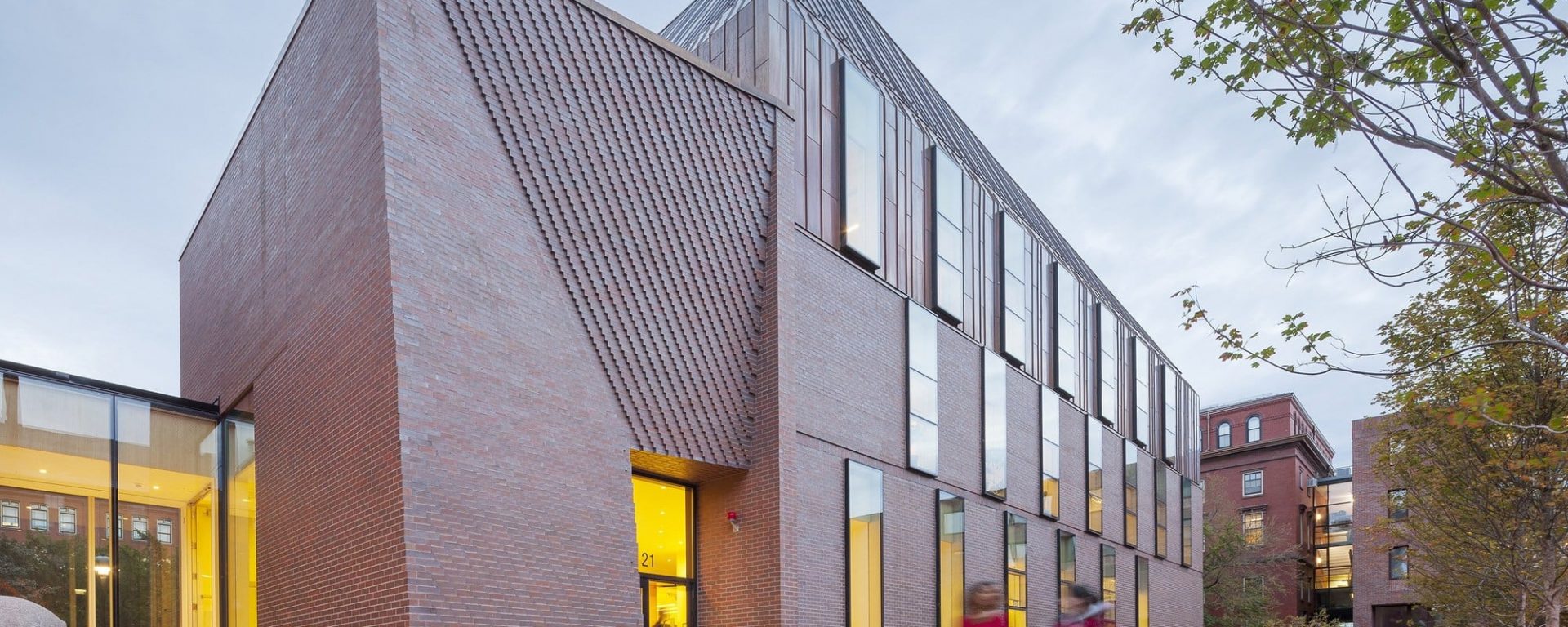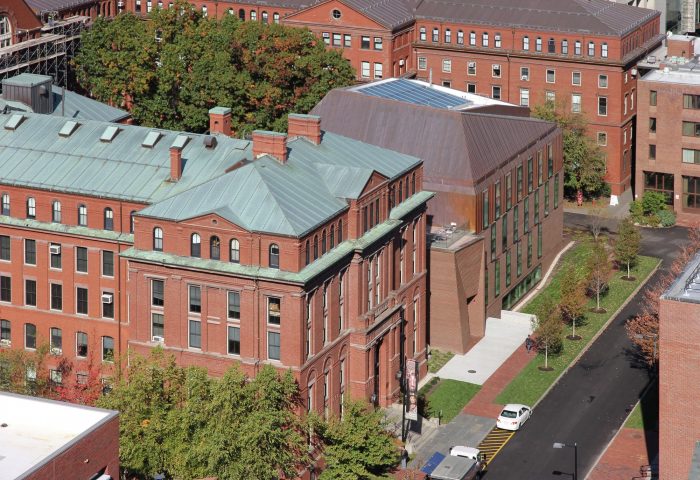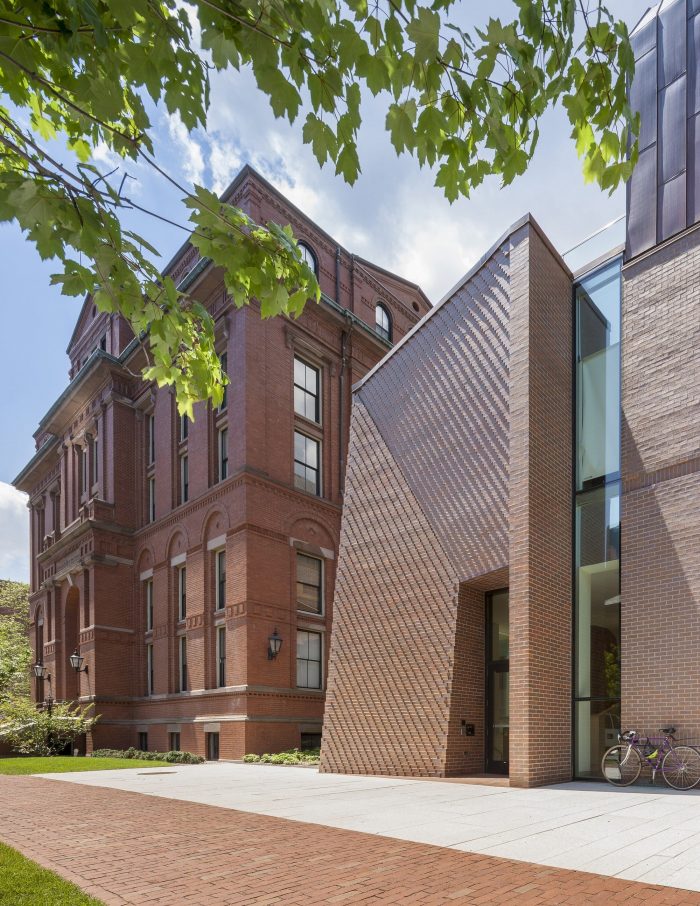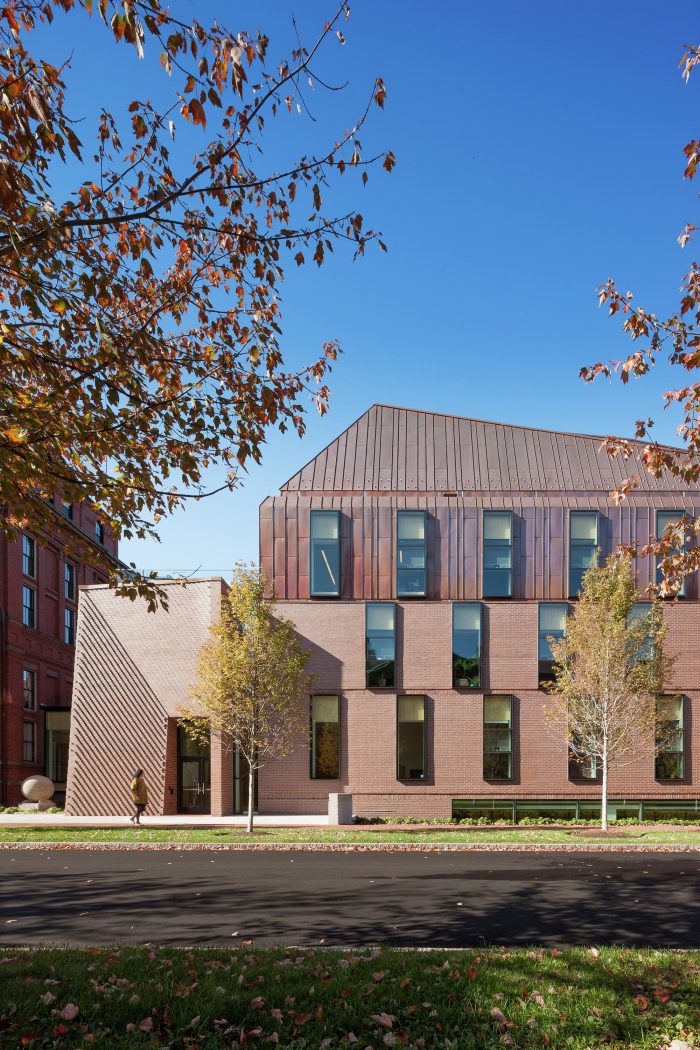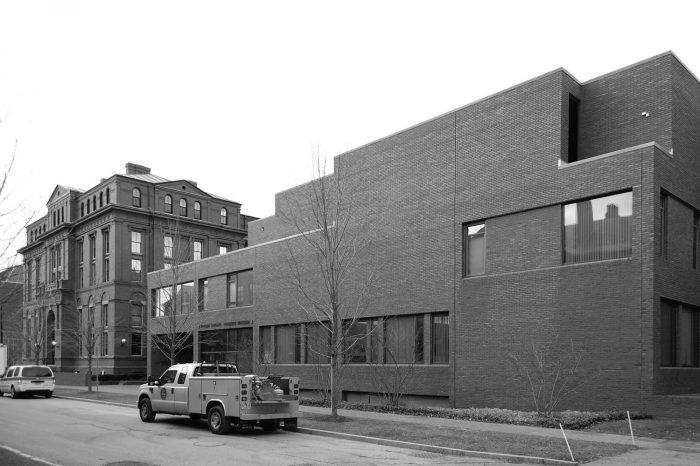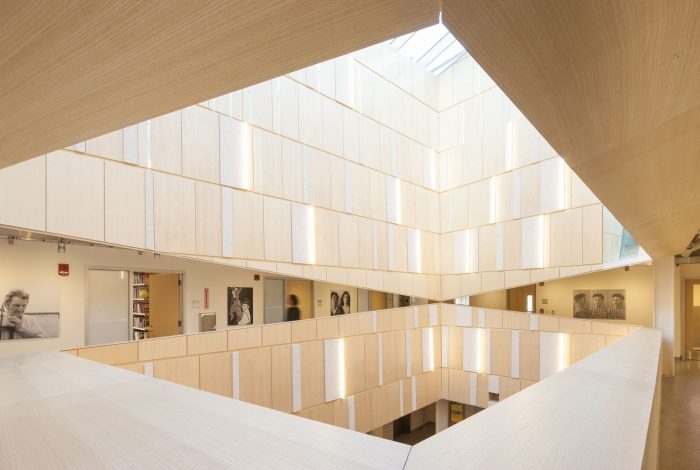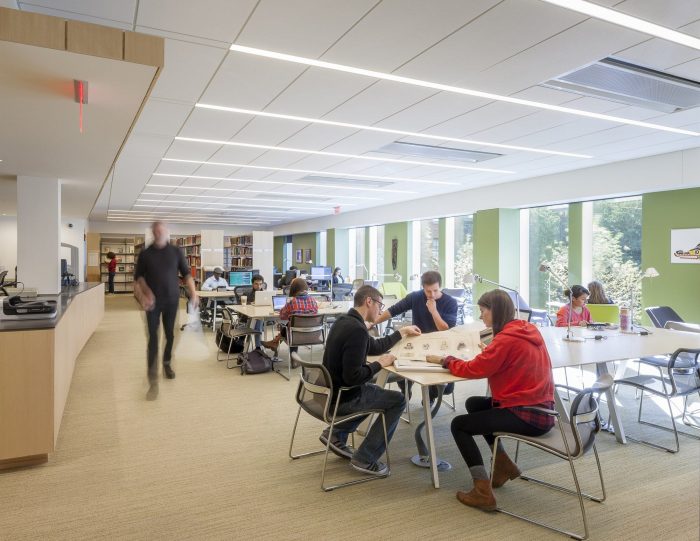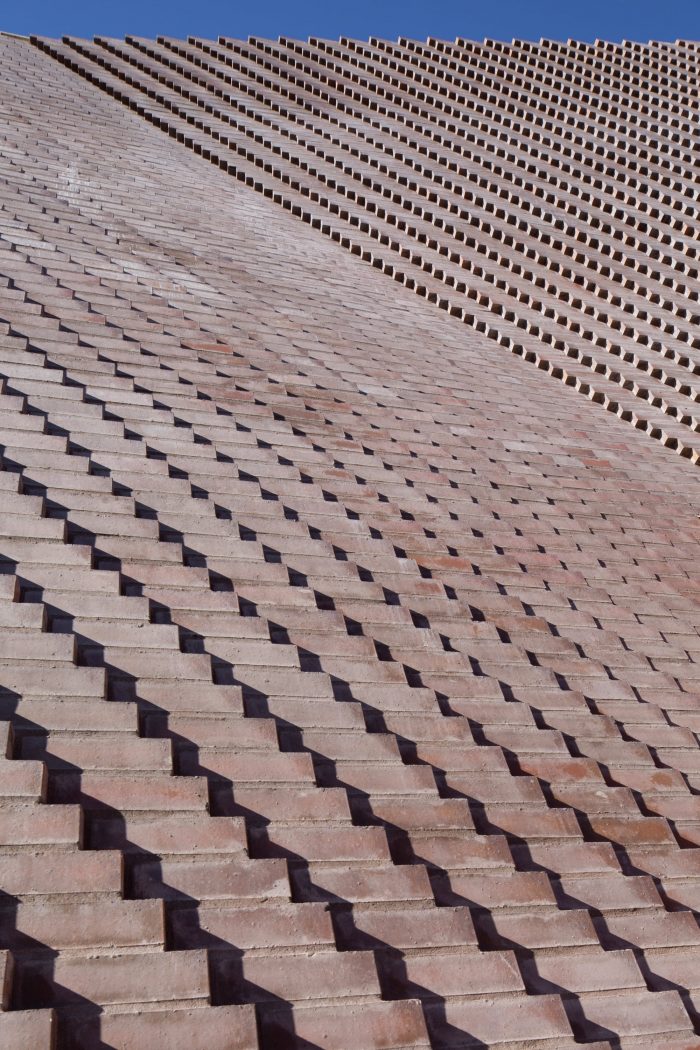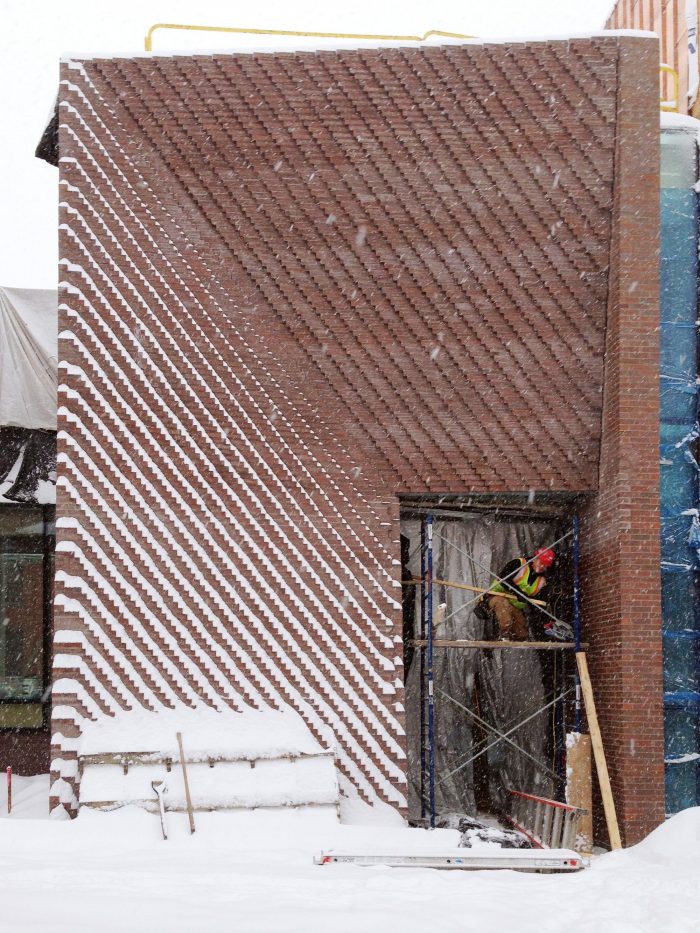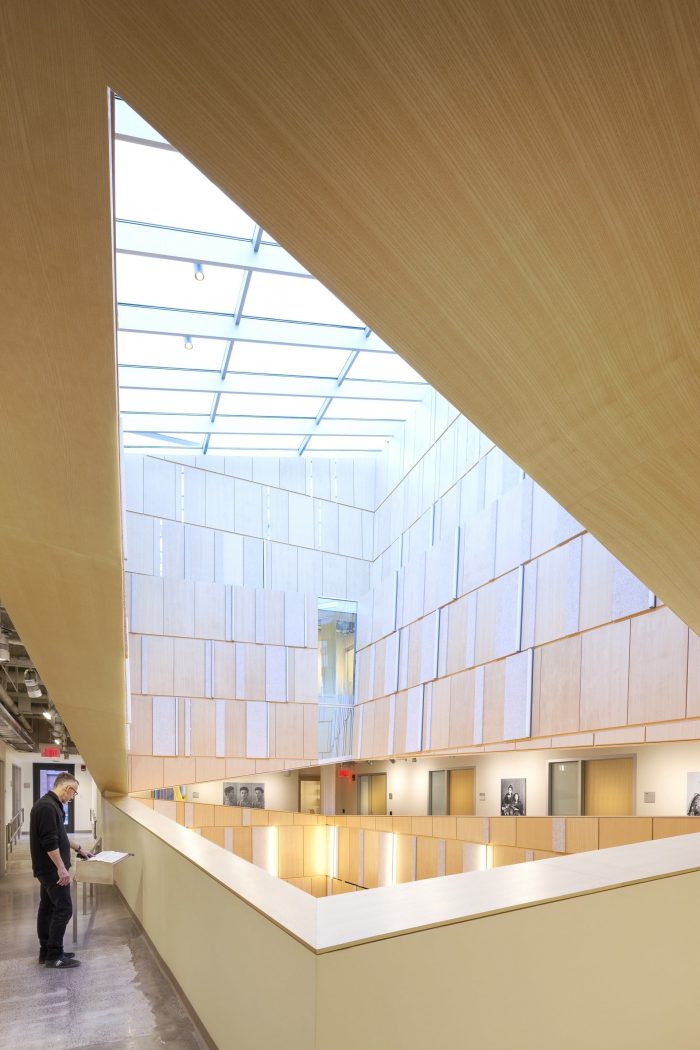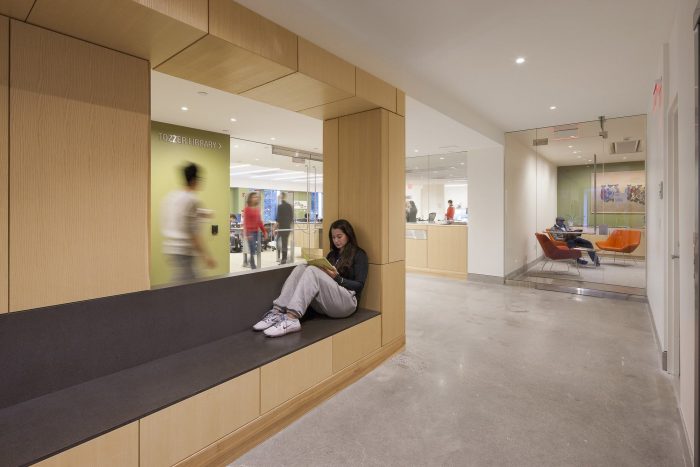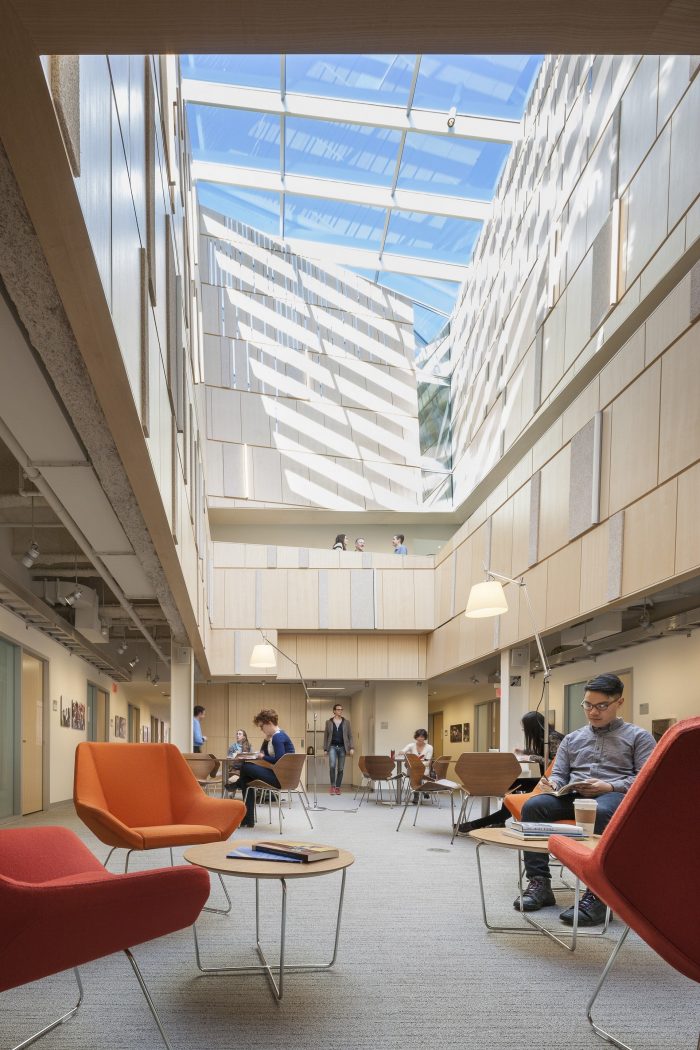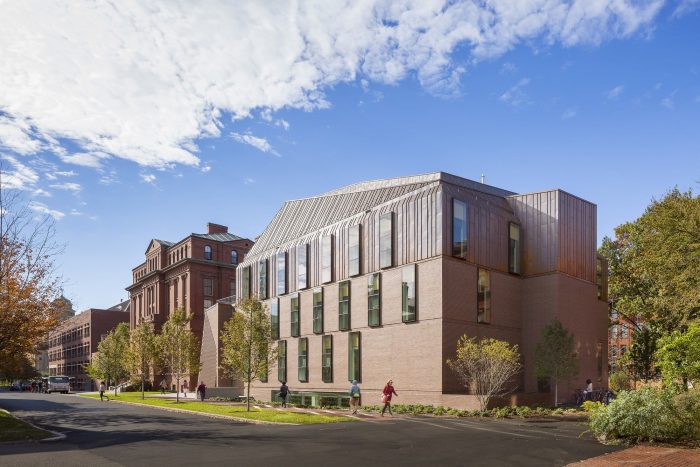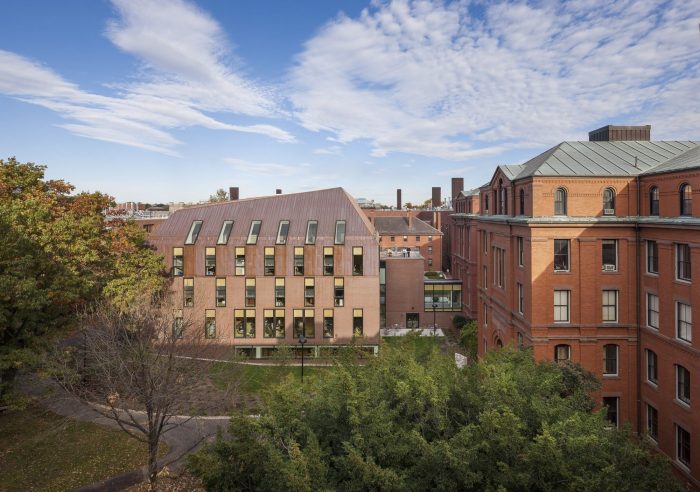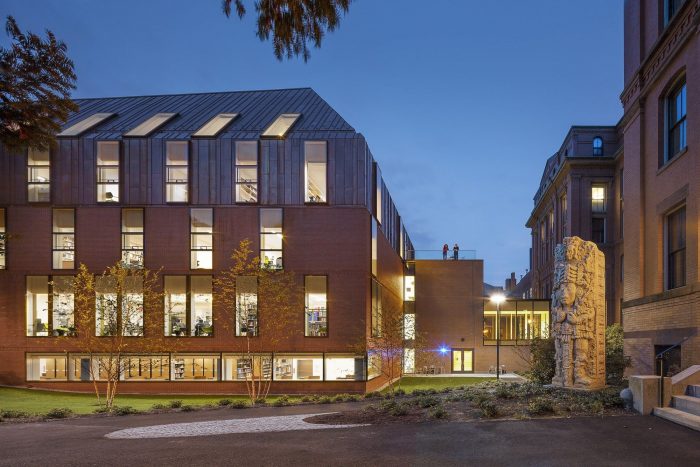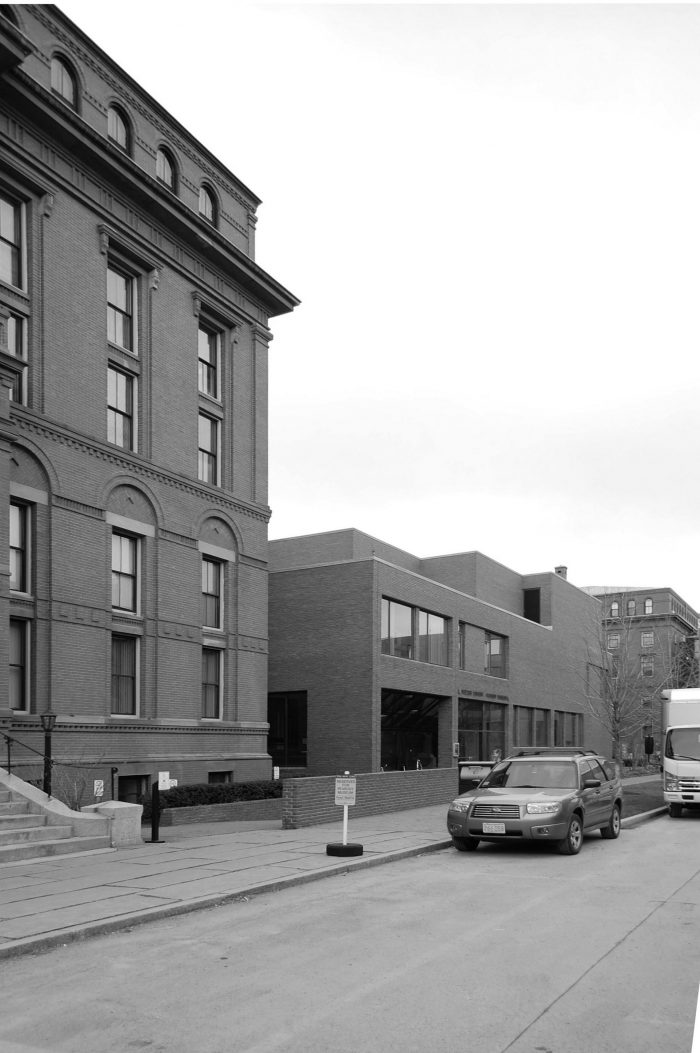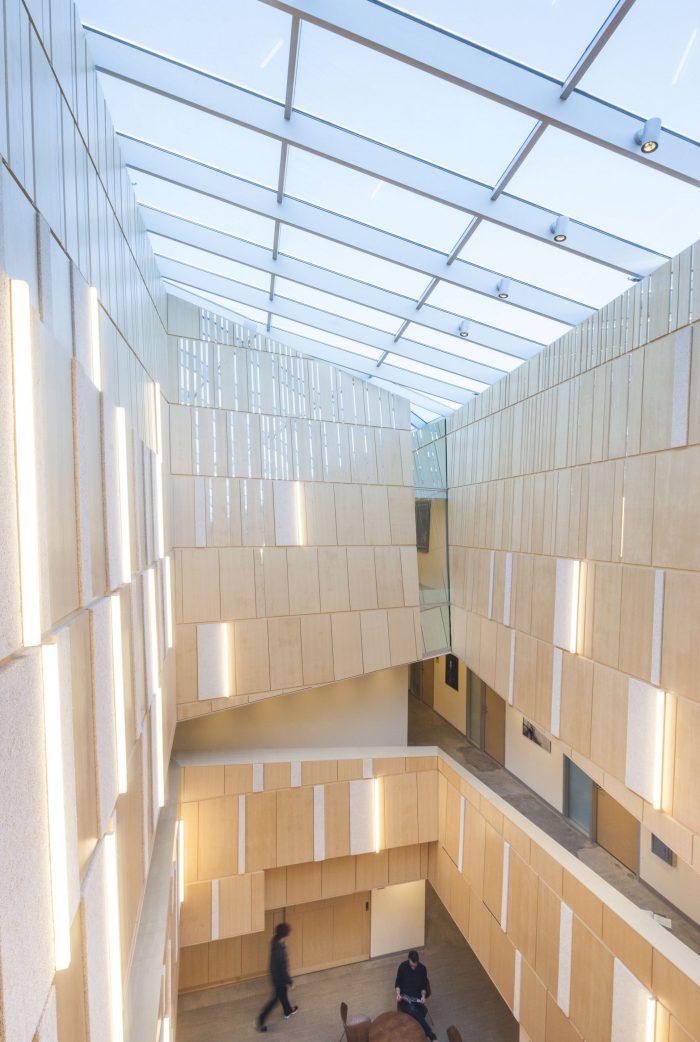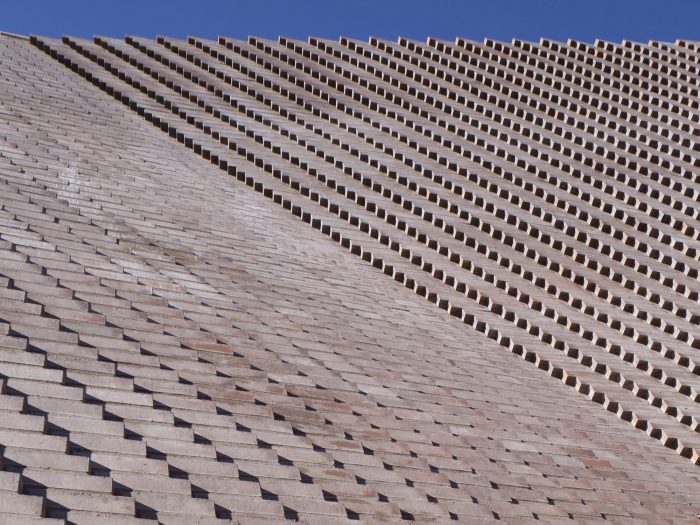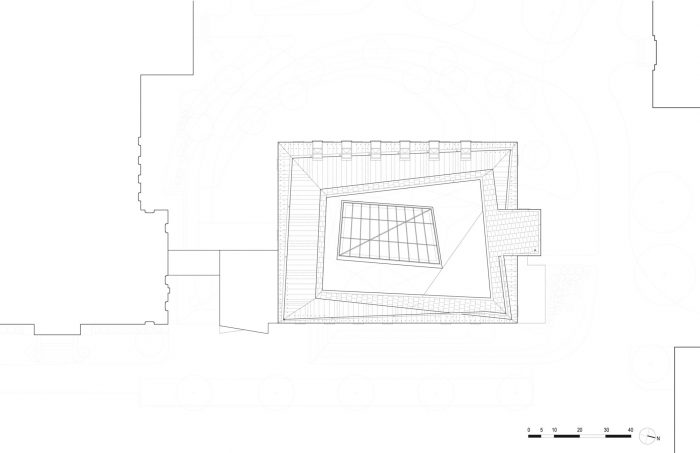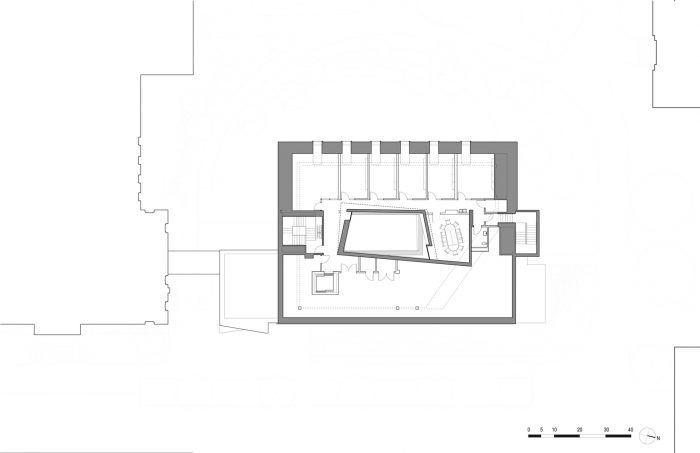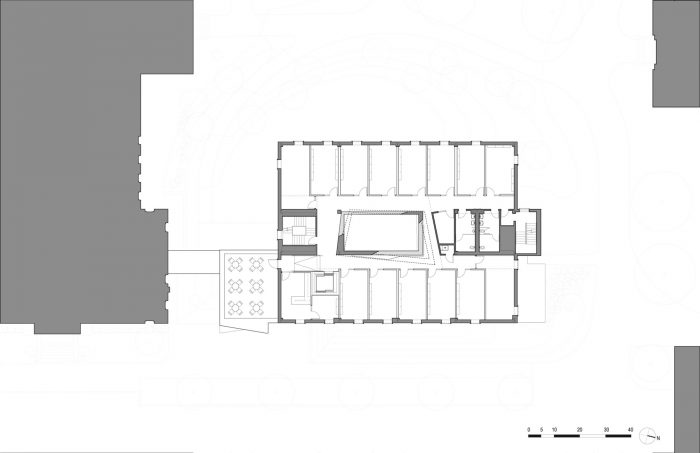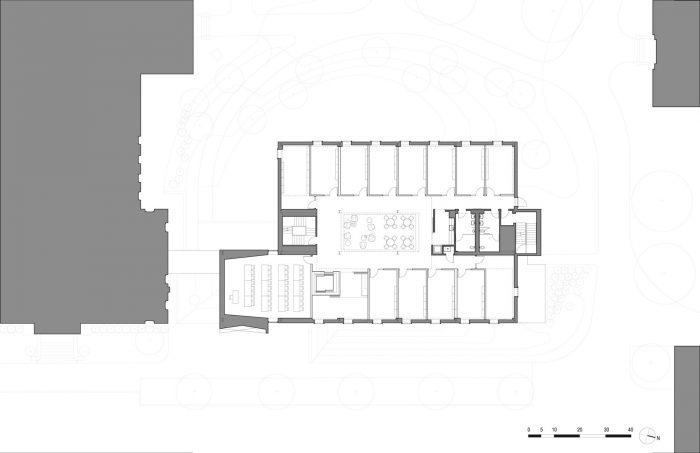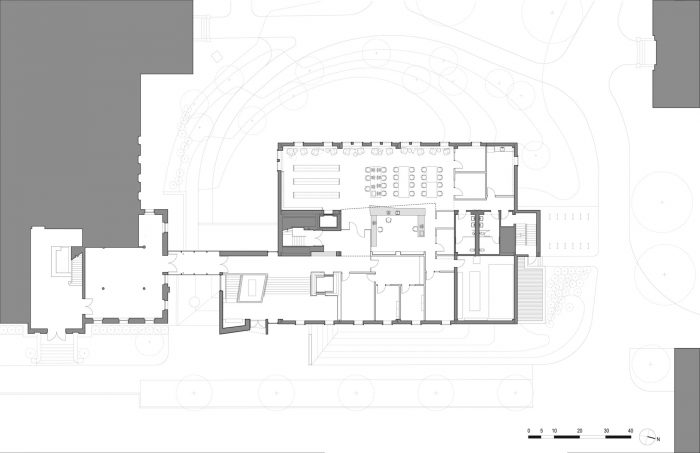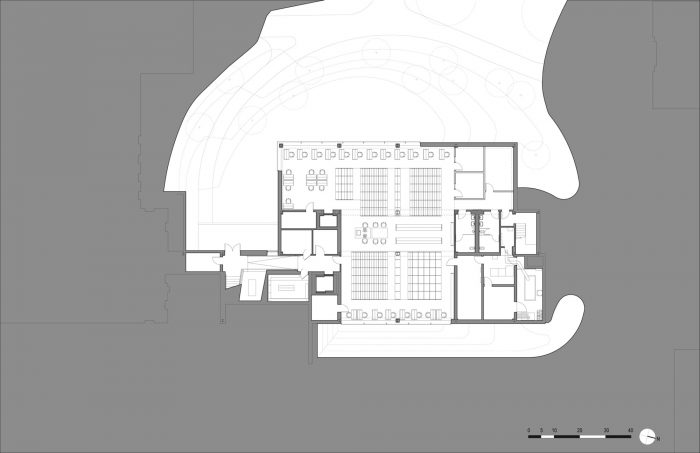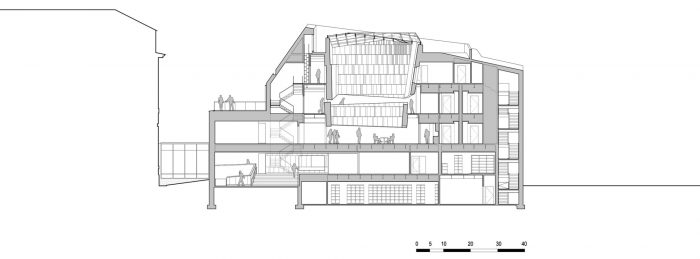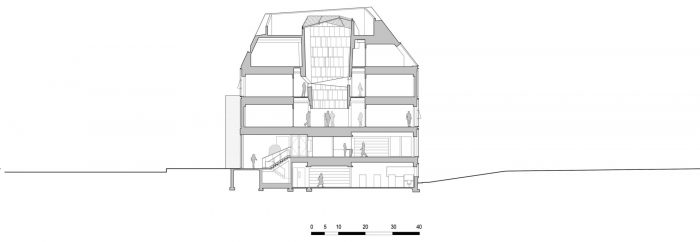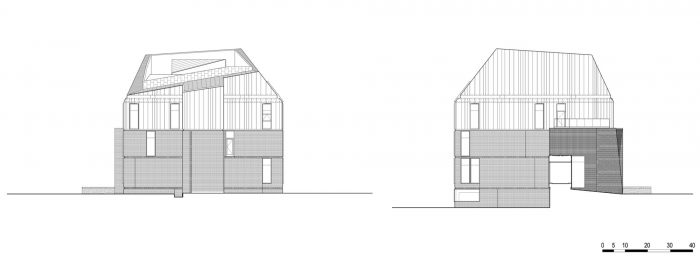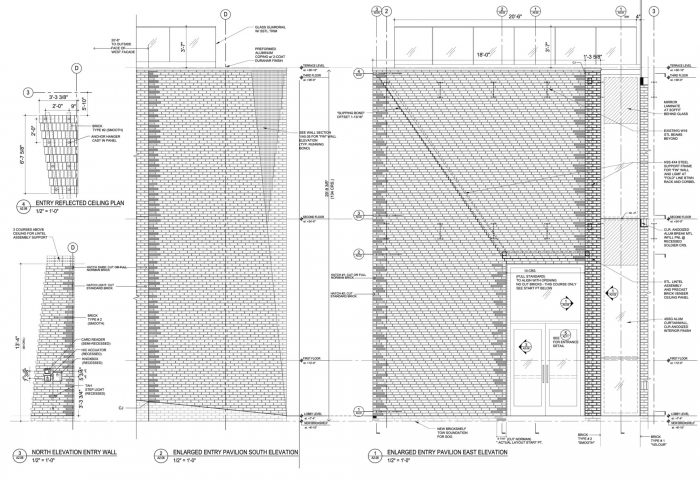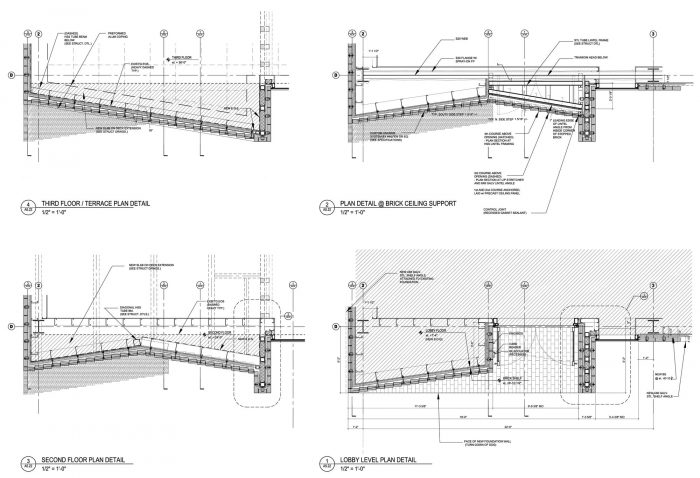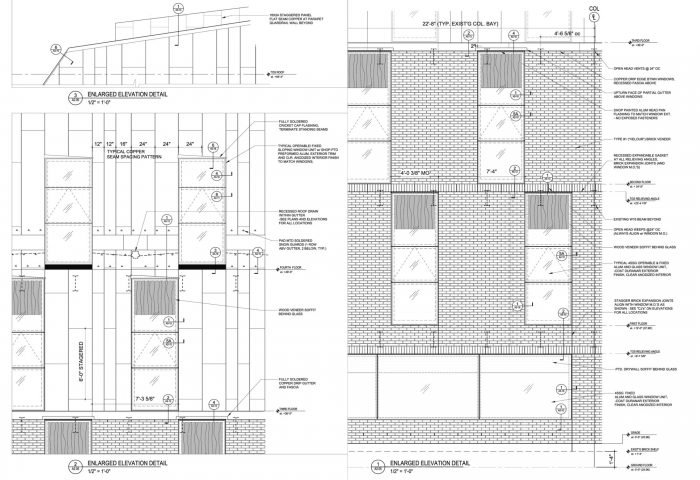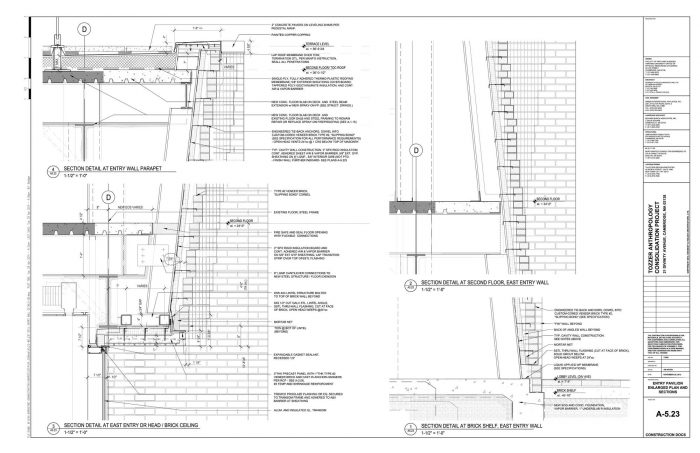新的托泽尔人类学大楼是对现有图书馆大楼的35,000平方英尺的改造,其中包括教师和研究生办公室、图书馆、教室和研讨会空间,并为邻近的博物馆群提供便利。 大楼位于神学大道的尽头,与神学堂隔街相望,位于大学博物馆的中间,是由皮博迪考古学和民族学博物馆和哈佛自然历史博物馆组成的大型庭院建筑。 这两座建筑都被列入国家历史遗迹名录。
The new Tozzer Anthropology Building is a 35,000 square foot transformation of an existing library building which houses faculty and graduate student offices, a library, classroom and seminar spaces, and provides accessibility to an adjacent museum complex. The building is located at the end Divinity Avenue across the Street from Divinity Hall and in the middle of University Museum, a large courtyard building made up of the Peabody Museum of Archaeology and Ethnology and the Harvard Museum of Natural History. Both buildings are on the National Register of Historic Places.
该大学的人类学系由考古学和社会人类学组成,曾被安置在两座大楼里,限制了这两个项目之间的社会互动。 随着图书馆藏书的合并,哈佛大学试图通过将社会人类学的行政办公室和教学空间迁入新楼,将其与考古学直接相连,并为合作和参与提供慷慨的社交空间,从而将这些项目统一在一个屋檐下。
The university’s Anthropology Department, made up by Archaeology and Social Anthropology, had been housed in two buildings limiting social interaction between the two programs. With the consolidation of library holdings, Harvard University sought to unify the programs under one roof by moving Social Anthropology’s administration offices and teaching spaces into the new building, connecting it directly to Archaeology, and calling for generous social spaces for collaboration and engagement.
项目设计
现代主义时代的大学建筑在全美范围内逐渐老化,原因是基于不能满足当代围护结构、抗震和能源要求的建筑规范的过时建筑。 同时,大学不能忽视构成这些建筑的内含能源和材料。 Tozzer人类学大楼通过重新使用现有建筑的地基、校园基础设施连接以及钢筋和混凝土结构,改变了Johnson和Hotveld的1971年Tozzer图书馆的公共存在和项目。新的建筑体量通过一个铜制的屋顶体量增加了29%的可用面积,它可以旋转以捕捉日光,并加强了对该建筑作为皮博迪庭院中的一个亭子的解读。
Project Design
Modernist era university buildings are aging across America due to outdated construction that was based on building codes that cannot meet contemporary envelope, seismic, and energy requirements. At the same time universities cannot dismiss the embodied energy and materials that make up these buildings. The Tozzer Anthropology Building transforms the public presence and programs of Johnson and Hotveld’s 1971 Tozzer Library by re-using the existing building’s foundation, campus infrastructure connections, and steel and concrete structure. The new massing increases usable SF by 29% with a copper roof volume, which rotates to capture daylight and strengthens a reading of the building as a pavilion in the Peabody Courtyard.
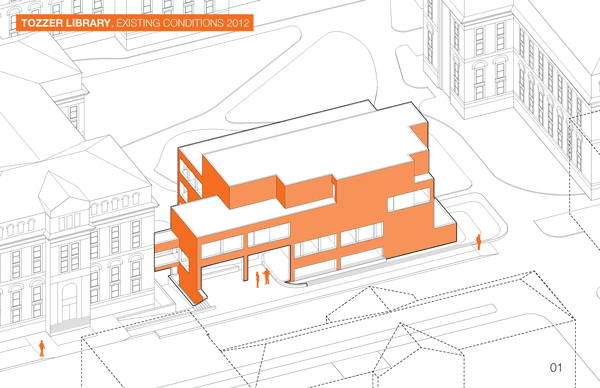
该项目的体量策略在一个大的铜制屋顶下增加了两层新建筑,该屋顶可以旋转以捕捉日光,形成一个大的内部采光井,内部程序围绕该采光井进行。 一个外部门廊将该建筑与Divinity大道隔开,一条废弃的隧道禁止人们进入院子。该设计在Divinity大道上创建了一个公共入口,在大厅、外部庭院和皮博迪博物馆藏品之间建立了新的公共联系。 体量加强了对Tozzer人类学建筑作为皮博迪院子里的一个亭子的更独立的解读。新的设计包括新的景观元素和皮博迪院子的分级,以及考古照片和文物的设计整合。
The project’s massing strategy adds two stories of new construction under a large copper roof volume, which rotates to capture daylight for a large internal light well around which the internal programs revolve. An exterior porch had separated the building from Divinity Avenue, and a dis-used tunnel prohibited access to the courtyard. The design creates a public entry on Divinity Avenue, which establishes a new public connection between the lobby, the exterior courtyard and the Peabody Museum Collections. The massing strengthens a more independent reading of the Tozzer Anthropology building as a pavilion in the Peabody Courtyard. The new design includes new landscape elements and grading of the Peabody Courtyard as well as the design integration of archeological photographs and artefacts.
1971年的三层砖围墙由于原建筑中的霉菌和隔汽层问题而无法重新使用。线切割的 “铁烧砖 “为主楼提供了质感,而入口亭则使用了精确的平滑处理–一个 “厚 “的、数字雕刻的砖块体积,它使用并改变了当代6英寸砖面空心墙结构。 在新的入口亭,设计发明了一个数字堆叠和corbelled砖的细节。通过设计,每个砖块单元都与入口亭的整体结构形式联系在一起。使用专门为这个项目创建的软件,数字砖镶边在许多原型中进行了数字和经验的测试。数字 “墙角 “被逐一3D建模,然后由当地石匠进行模拟。30英尺的砖砌入口没有控制缝或缓解角,只有一个定制设计的松散门楣,设置在悬挂的砖天花板之上。 每块砖都是按照整个建筑的几何形状从下面的课程中移出来的,创造出一种独特的模式,这种模式来自于–而且只能与–这种特定的体量形式一起工作。
The 1971 three-story brick envelope could not be re-used due to mold and vapor barrier problems in the original construction. A wire cut ‘iron burnt brick provides texture for the main building while a precise smoother finish is used for the entry pavilion– a ‘thick’, digitally sculpted volume of brick, that uses and transforms a contemporary 6” brick veneer cavity wall construction. At the new entry pavilion, the design invents a digitally stacking and corbelled brick detail. Each brick unit is tied, by design, to the overall global form of the entry pavilion’s massing. Using software created specifically for this project, the digital brick corbelling was tested digitally and empirically in numerous prototypes. The digital ‘corbel’ was 3D modelled course by course then mocked-up by local masons. The 30′ brick entry has no control joints or relieving angles, just one custom-designed loose lintel set above the hung brick ceiling. Each brick course is shifted from the course below following the overall building geometry, creating a unique pattern that is derived form –and could only work with– this specific massing form.
主体建筑由 “薄 “的教化砖带包裹,表达了现有的板块,而新的砖围护结构则从板块上卸下。垂直伸缩缝在各楼层之间交错排列,而水平伸缩缝则出现在凹陷的实体课程后面。 结构上的玻璃凸出窗滑过 “薄 “砖围护结构,为图书馆和庭院提供了广阔的视野。通过 “厚 “和 “薄 “的游戏,该设计创造了一个真实的砖材料表达,反映了当代建筑和皮博迪博物馆的分层砖。
The main building is wrapped by ‘thin’ taught brick bands which express the existing slab, off which the new brick envelop is relieved. Vertical expansion joints are staggered between floor levels while horizontal expansion joints occur behind recessed solider courses. The structurally-glazed projecting windows slide past the ‘thin’ brick envelop and align to provide large views from Library to Courtyard. With a play of “thick” and “thin”, the design creates an authentic brick material expression that reflects contemporary construction and the layered brick of the Landmarked Peabody Museum.
KVA设计团队与大学和人类学教职员工及图书馆员合作,开发了智能教室、同事空间、教职员工办公室和更新的人类学图书馆,以存放Tozzer人类学藏品。新项目围绕着一个扭曲的中央光井组织,该光井由一个增强型的新白桦木板系统包覆,可以反射光线和吸收声音。办公室、教室和非正式的聚会场所围绕着这个 “生活空间”,它将日光带入建筑,并在各楼层之间建立视觉关系。作为创新的节能通风系统的一部分,光井循环调节空气。托泽尔人类学大楼最近完工,并获得了LEED金奖认证。
Working with University and Anthropology Faculty, Staff and Librarians, the KVA design team developed smart classrooms, collegial spaces, faculty offices and a renewed Anthropology Library to house the Tozzer anthropology collections. The new program is organized around a torqued central light well clad in an augment new birch wood panel system which reflects light and absorbs sound. Offices, classrooms and informal gathering places ring this “living space”, which brings daylight into the building, and creates visual relationships between floor levels. The light well circulates tempered air as part of an innovative energy-saving ventilation system. The Tozzer Anthropology building was recently completed and has received LEED Gold certification.
Architects: Kennedy & Violich Architecture
Area : 35000 ft²
Year : 2014
Photographs :John Horner
Manufacturers : Sika, Benjamin Moore, GRACE, Johnsonite, Kawneer, Kohler, Siemens, Signify, Sloan Valve Company, TGP, USG, A&L Aquecedores, AJAX Boiler, Acurlite, Alkco, Axion, Azrock, B-K Lighting, Bartco Lighting, Boston Sand & Gravel
Landscape Architect : Richard Burck Associates
Lighting Design : Tillotson Design Associates
Civil Engineering : Green International Affiliates Inc
Acoustic Consultant : Cavanaugh Tocci Associates
MEP Engineer : Buro Happold
Structural Engineering : LeMessurier Consultants
Project Architect : Greg Burchard
Project Manager : J. Seth Hoffman
Kva Team : Justin Hui, Jungmin Nam, Charles Garcia, Daniel Sullivan, Alda Black, Alex Shelly, Blair Cranston, Ben Widger, Kyle Altman
General Contractor : Consigli Construction Company
Engineer Structural : Lemessurier Consultants
Engineer Mep/Fp : Buro Happold Consulting Engineers, PC
Engineer Building Envelope : Buro Happold Consulting Engineers, PC
Engineer Civil : Green International Affiliates Inc
Code Consultant : Hughes Associates
Managing Principal : Frano Violich
Principal Consulting On Design : Sheila Kenned
Fire Protection : Buro Happold
Building Envelope Engineering : Buro Happold
City : Cambridge
Country : United States

